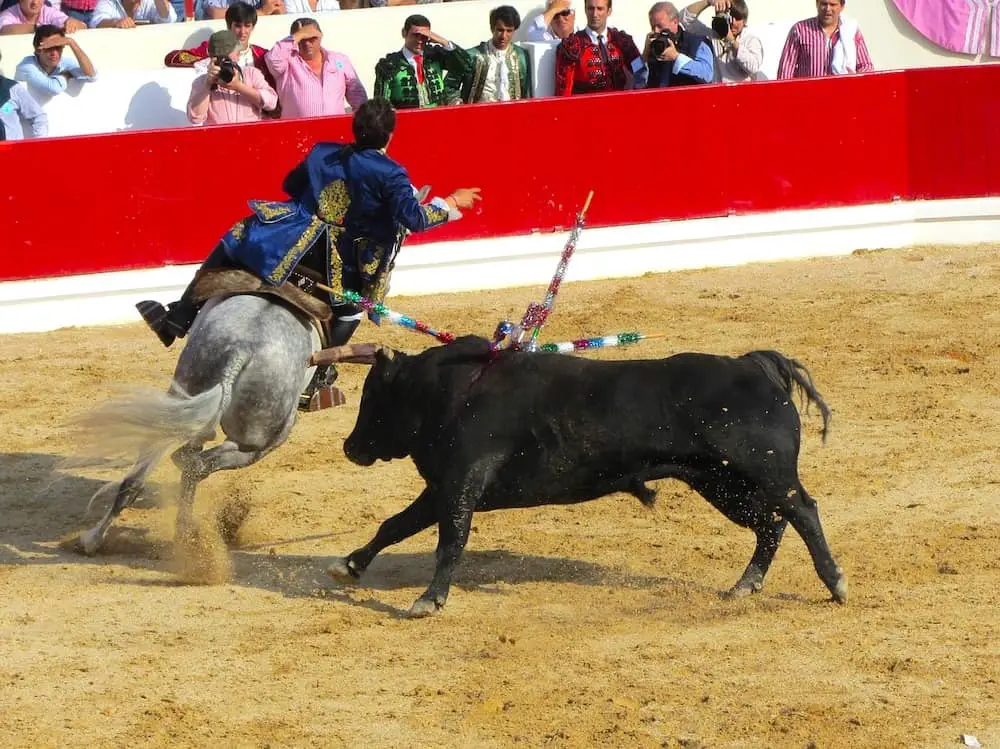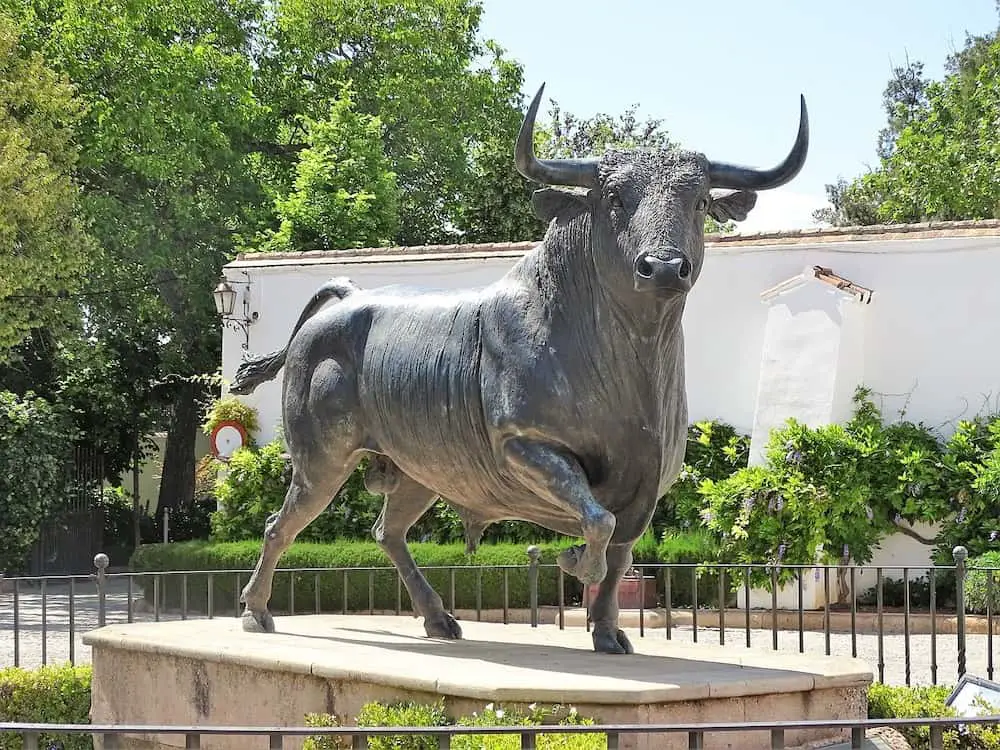Bullfighting has been a "sport" for thousands of years, but just because it's a tradition doesn't mean it isn't a cruel one. This dance between man and beast has been highly controversial for quite some time due to the treatment of the bulls.
Bullfighting is an exceptionally cruel sport where the bull is subject to significant emotional and mental stress in addition to physical pain, frequently before it even enters the ring. Due to its inhumane and unethical nature, bullfighting is illegal in most countries except the few where it is deeply ingrained in their cultures, such as Spain and Portugal.
Read on to learn more about why bullfighting is considered a cruel sport and how you can help ensure this horrendous sport becomes illegal worldwide.
What Makes Bullfighting Cruel?
For some, bullfighting is an honored tradition or even an art that demands respect. But over the past decade, the vast majority of people have spoken up about the atrocities of this sport.
Tradition shouldn't be an excuse for animal cruelty, and bullfighting is arguably one of the cruelest animal sports in existence for reasons we've detailed below.
Pre-match Treatment of the Bulls
When it comes to bullfighting, these animals' cruel and inhumane treatment starts before they even set foot into the ring.
To prepare a bull for the upcoming fight, it is subject to horrendous forms of debilitation, including:
These tactics alone put to rest any claim someone has to bullfighting being a fair sport. Because at full strength – no human is a match for the ferocious power and speed of a full-grown bull.
Therefore, numerous steps are taken to weaken and debilitate these majestic giants, ensure a good fight, and protect human participants.
In addition to the various forms of debilitation, bulls used for bullfighting also undergo a tremendous amount of stress before they enter the ring due to their treatment. They are held in small, dark cells and completely isolated from their herd, to increase their stress before they face the brutality of the fight.
Treatment of the Bulls in the Ring
Typically, bulls used in bullfights are bred explicitly for this event and are between 4 and 6 years old and weigh at least 1,014 pounds when they go to the ring.
However, there is an event known as the novillada where audience members of all ages have the opportunity to stab a baby bull to death and then cut off the dying calf's ears and tail.
One of the most appalling and cruel elements of bullfighting is that this isn't a quick death for the bull. Not even close. Bullfights spread over course of three acts, and each act has its own horrors that the bull is subjected to before its corpse is dragged out of the ring.
Act 1: The Picadors
Just before the bull enters the ring, it is harpooned, so it is already visibly bleeding. Apparently, this is done to please the audience, so that it is already at the mercy of the picadors.
These leaders of act one are men who ride on horses around the bull and attempt to drive lances into the bull's back and neck muscles. This is done carefully and strategically by the picadors to ensure the bull loses its ability to lift its head and use its horns for defense.
The picadors will twist these lances to cause significant blood loss both to weaken the bull and entertain the crowd, but they are careful not to kill the bull before the remaining acts can begin.
An important note to make here is that act one introduces another animal subject to significant cruelty through this sport, the horses. Ridden by the picadors, the horses run a considerable risk of injury or even death in the ring.
If the picador doesn't absolutely exhaust them as they ride in circles around the bull, they could quickly feel the bull's wrath and receive lacerations or even impalement from the bull's horns. Sometimes these injuries are so severe that they are fatal.
Act 2: The Banderilleros
After the picadors have impaired the bull, the banderilleros strut into the ring and perform the task of plunging banderillas into the bull's back. Making sure to carefully avoid its horns.
In addition to weakening the bull further with these colorful harpooned sticks, the banderilleros are responsible for causing more blood loss and exhausting the bull by forcing it to chase them in circles until it no longer has the stamina to do so. Then, the final act can commence.
Act 3: The Matador
Probably the most famous act of bullfighting is when the matador appears. The bull is utterly exhausted by now, it has lost a significant amount of blood, and it has multiple banderillas impeded in its body.
This poor creature is in a state of immense pain and stress, and sadly, the worst is yet to come.
The matador does not wield lances or harpooned sticks. No, he wields a sword. At first, the matador holds a fake sword while he performs for the crowd, and the exhausted bull stands motionless. However, this is short-lived, and the matador soon takes hold of a real sword as he taunts and entices the weary bull to charge.
Provoked, stressed, in pain, and afraid, the bull inevitably charges, and as it does, the matador attempts to severe the bull's aorta and kill it almost immediately. Unfortunately, it rarely happens this way.
Most matadors miss and stab the bull "incorrectly," penetrating flesh and other organs that only make their death slower and more painful.
When the matador has successfully penetrated the bull to the point that it collapses, they will draw a dagger and cut along the bull's spinal cord, not to make the bull's death quicker. This is purely done to entertain the audience with the visual of a bloody river flowing from the bull.
What's more horrific is that the bull is often still alive when this occurs and might still be alive afterward when the matador cuts off the bull's ears or tail for trophies with the crowd's approval.
The Fate of Bullfighting Bulls
An estimated 250,000 bulls are killed in bullfights every year. The majority of these bulls die in the ring at the hands of the matador.
If the immense brutality and mutilation inflicted on the bull don't kill it after the matador has slit his spine and claimed his trophies, then the bull is chained up by its horns and dragged out of the ring to be slaughtered elsewhere.
Once the bulls are killed, they are processed in a slaughterhouse and their meat is sold to restaurants and butcher shops.
It is rare, but there are occasions where the bull is "pardoned" by the crowd, and they spare his life spared.
The Future of Bullfighting and How to Stand Against It
Bullfighting is illegal in most countries due to its cruel nature, and yet, it is still legal in far too many. But it might not be for the reason you think.
Many nations, where bullfighting is still legal, refuse to ban the sport because of the financial benefits. But what was once an immensely popular and profitable tradition has significantly declined in recent years and might be coming to an end very soon.
For instance, government figures in Spain show that only 5.9% of the population went to a bullfight in 2018. And 65% of Spaniards have 0-2 interest levels out of 10 in bullfights.
Unfortunately, despite the significant decline in native interest and increased demands for the sport to be banned, bullfighting is still around partially because of its appeal to tourists.
Some tourists might not approve of the outright brutality demonstrated in bullfighting, but many will support bull spectacles like the running of the bulls, which is just as problematic. Many of the bulls in this event are merely slaughtered and sold afterward.
The best way to ensure bullfighting is banned worldwide is to refuse to support any sport involving this animal and to educate others on the cruelty bulls are subjected to for national profit.
Final Thoughts
There's little doubt that bullfighting is an incredibly cruel sport, and thankfully, many nations have recognized this and taken the necessary steps to make bullfighting spectacles illegal.
Although there are a few nations that still hang on to this ancient tradition, primarily for profit, there is hope that in the very near future, they too will ban bullfighting as interest and revenue decline and protests increase.
There are so many sports across the world that use animals and are renowned tourist attractions too. But not all of them have to be cruel – husky sledding is a great example of this. Everything you need to know about this incredible sport is right here: Is Husky Sledding Cruel?


